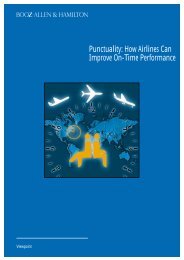The sentence
The sentence
The sentence
You also want an ePaper? Increase the reach of your titles
YUMPU automatically turns print PDFs into web optimized ePapers that Google loves.
2. We use which or that (in place of noun subjects and it) to refer to animals and things:<br />
That’s the cat which/that I photographed. Those are the cats which/that I<br />
photographed.<br />
That’s the photo which/that I took. Those are the photos which/that I took.<br />
However, we usually omit which and that. We say:<br />
That’s the cat I photographed. Those are the cats I photographed.<br />
That’s the photo I took. Those are the photos I took.<br />
‘Who (m)’, ‘which’ or ‘that’ as the objects of prepositions<br />
<strong>The</strong> position of prepositions in relative clauses is very important. We can say:<br />
1. He is the person to whom I wrote. (Never *to who*) (very formal)<br />
This is the pan in which I boiled the milk. (very formal)<br />
2. He is the person who(m) I wrote to. This is the pan which I boiled the milk in.<br />
3. However, we usually prefer to omit the relative and say:<br />
He is the person I wrote to. This is the pan I boiled the milk in.<br />
G. <strong>The</strong> complex <strong>sentence</strong>: ‘whose’; defining/non-defining clauses<br />
‘Whose’ + noun in relative clauses<br />
1. We use whose in place of possessive adjectives (my, your, his, etc.) to refer to people.<br />
Whose does not change when it refers to masculine, feminine, singular or plural:<br />
He’s the man/She’s the woman whose car was stolen. (Not *whose his car was stolen*)<br />
<strong>The</strong>y’re the people whose cars wire stolen. (Not *whose their cars were stolen*)<br />
2. We sometimes use whose in place of its to refer to things and animals:<br />
That’s the house whose windows were broken. (= the windows of which)<br />
3. We can also use whose with prepositions:<br />
He’s the man from whose house the pictures were stolen. (formal)<br />
He’s the man whose house the pictures were stolen from.<br />
Defining and non-defining clauses<br />
1. When we write relative clauses with who, which or whose, we have to decide whether to<br />
use comma ‘round the clauses’ or not.<br />
2. In <strong>sentence</strong>s like:<br />
I’ve never met anyone who can type as fast as you can.<br />
<strong>The</strong> magazine which arrived this morning is five days late.<br />
the relative clauses tell us which person or thing we mean. <strong>The</strong>y give us essential<br />
information which we cannot omit. We call them defining clauses because they ‘define’<br />
the person or thing they refer to. We never use commas in such <strong>sentence</strong>s.<br />
We never use commas with that in relative clauses:<br />
I’ve just had a phone call from the people (that) we met during our holidays.<br />
<strong>The</strong> wallet (that) you lost has been found.<br />
6




